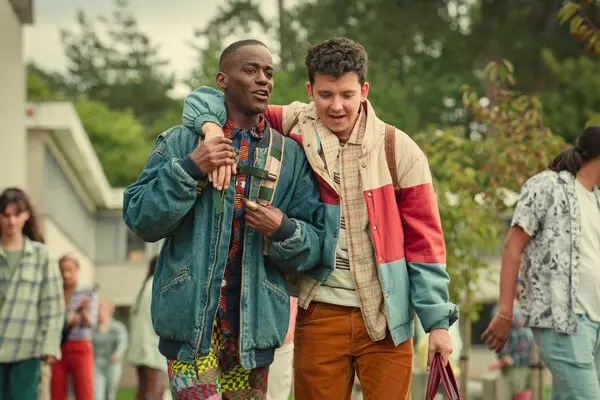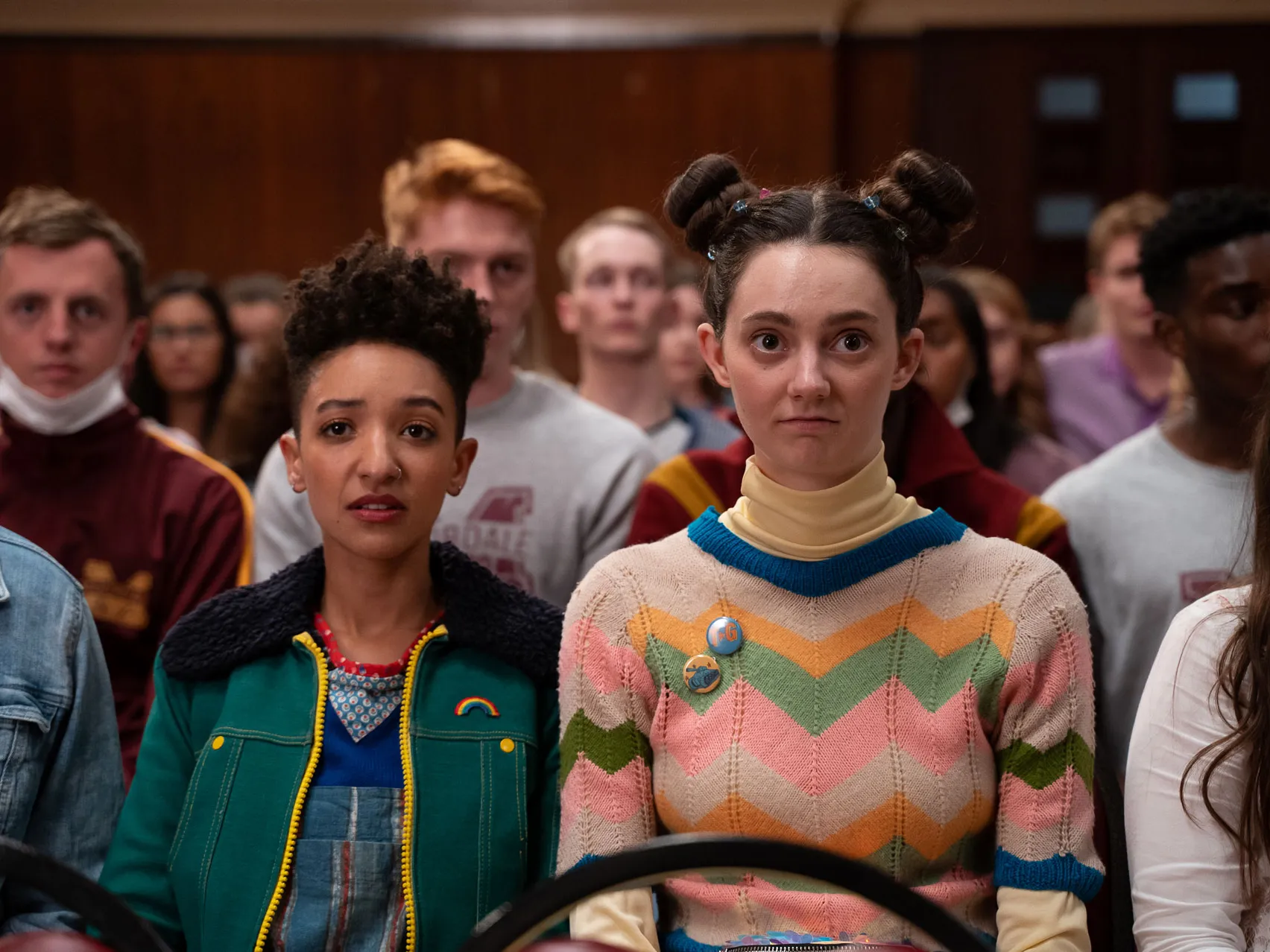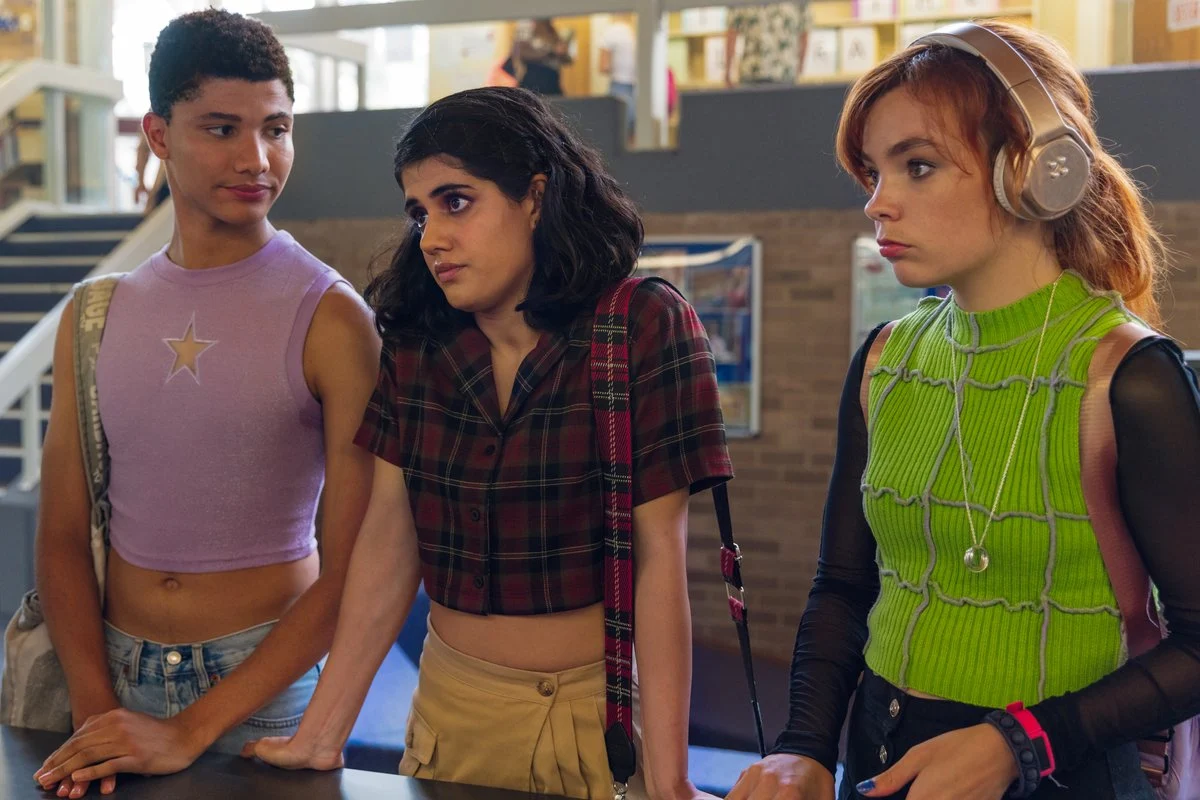Imagined Spaces and Teenagers in High School
- Maria Isabel Nieves Bosch
- Sep 24, 2023
- 6 min read
A comparative analysis of Sex Education (2019-2023), Heartbreak High (2022-), and Young Royals (2021-).
In light of the new and final season of Sex Education, I was inspired to write a comparative analysis of similar shows that target young audiences and achieve more demand from viewers by presenting coming-of-age stories through various tropes, styles, and aesthetics. These shows include UK's Sex Education, Australia's Heartbreak High, and Sweden's Young Royals. Across many generations, sex has been too inappropriate for people to talk about even amongst close family members or in private spaces. Parents or guardians have not been adept at guiding children through their sexual growth, causing important stages of development, like puberty, to be embarrassing and a period one suffers through rather than experience. However, sex education enters the collective imagination through television shows and mainstream popular culture, which allow viewers to consider broader ideas about relationships and oneself. Netflix becomes the main source of filling the gap of sex education, unlike other shows like HBOs Euphoria, when distributing YA dramas that are feel-good, funny, and diverse.
Across Sex Education, Heartbreak High, and Young Royals, one can catch lots of resemblances, but the former two shows share similar colorful aesthetics via costumes and set designs. The costumes in Sex Education and Heartbreak High add a nostalgic style reminiscent of the 1970s and 1980s. The students at Moordale High School wear jean jackets with jean pants, pattern shirts, and outfits with fluorescent colors. The home is decorated with patterned wallpaper and warm shades. Otis has a collection of records, which he likes to listen from his record player rather than his iPhone; current technology persists, however, because the show is set in today’s time. In Professor Mareike Jenner's essay Netflix, Nostalgia and Transnational Television, she argues that the show Sex Education brings forth an imaginative space, or an “alternative space,” to “negotiate contemporary politics.” In other words, the narrative pivots away from a realistic setting to reckon with the taboos and the sensitivity around sexuality and sexual health. Many students seek Otis, as the designated sex therapist, for advice about their relationships, bodies, and worries. As the show goes on, the main characters (Otis, Eric, and Maeve) maintain centrality, but minor characters get introduced because they each have struggles and nuances that therapy or simply communication helps to alleviate. Furthermore, Professor Jenner also states, “This is not a utopia per se, as sexual assault, self-harm and homophobia still exists, but a world in which different identities can be formulated and expressed.” The key words "formulated and expressed" reflect therapeutic element of the show since characters deal with their problems by manifesting them in words. The same argument by Prof. Jenner about Sex Education can also be applied to Heartbreak High, where an imagined space enables characters to navigate contemporary politics, however this "alternative space" is closer to reality. It is also not a utopia since there is also racism, police brutality against indigenous communities, mental illness, and assault.
Students attending Hartley High on the show Hearthbreak High also wear quirky, retro, and fluorescent clothing, setting up the imaginative safe space for some of the teenagers to communicate their fears and desires. Nonetheless, not all characters participate in the style, especially those who undergo trauma or a major struggle, like Harper and Cash. Harper gets introduced as a punk-style badass whose buzzcut hair portrays a new identity and a scar. Her peers often wonder about her new hair and viewers eventually learn about the traumatic events that led her to her new look and sharp demeanor. Harper often dresses in black but wears more color after she confines in Amerie and no longer feels alone. On the other hand, Cash is an 18 year-old student who could not graduate and is repeating his final year of high school. Cash hangs out with a violent gang and is complicit in the group's illicit activities largely centered in theft; however, Cash's actions immediately oppose those of the gang when he defends a kid against the gang leader and also works to care for his grandmother. Like Harper, Cash also gets attention due to his mullet haircut, which everyone in the gang has. However, as he develops a relationship with the most fashionable queer character, Darren Rivers, Cash embraces his sexuality and helps turn in members of the gang to the police. Although some characters feel at liberty to dress and express themselves through a unique and quirky wardrobe, other students convey their struggles through haircuts and more normative clothing.
If Sex Education is the closest to a utopia and Heartbreak High comes second, then Young Royals is the farthest to utopia and closest to the real world. Young Royals carries a different approach because it is much more grounded in reality through its slow pace, flawed yet redeemable characters, and focus on the students at school as well as at their homes. The cinematography captures a natural environment and the costume design is much simpler since students wear the elite school's uniform and casual clothing. The show centers on the young Prince Wilhelm, who wants to lead a normal life and accepts (even is thankful) that he will not be king since his older brother is the heir to the throne. After being forced to attend the prestigious boarding school, Hillerska, Wilhelm falls in love with Simon, a boy on a scholarship and son of an immigrant. Both attempt to have a romance but Wilhelm's position as a royal challenges their relationship.
In contrast with the previous shows mentioned, Young Royals has fewer characters which provides more concentration on the teenagers' psyche. Consequently, stakes intensify once viewers are able to sympathize with the antagonist, August, but also remain loyal to the conflicted, frustrated, and trapped young prince. Both characters become complex since the show also presents different sides of them. For example, August demonstrates great obsession with his position as captain and prefect, but the story also shows the reasons why he desperately wants to be in control. August at school is a pompous, entitled, and annoying elitist but at home he is a dependent child who continues to mourn the suicide of his addict father, whose estate relieves August of at least a noble title despite being broke. On the other hand, Prince Wilhelm endures panic attacks alone in his bedroom but acts composed when he is surrounded by his Queen mother and other members of the court.
Another stark difference is that Young Royals does not include adults as characters that experience growth; this endeavor is left to the young students only. Parents in Sex Education confront their bullies (when Mr. Groff stands up against his brother) and acknowledge their mistakes and promise to be better (when Otis' mom writes a book about her son's puberty without his consent). Similarly, in Heartbreak High, the SLTS teacher Miss Jojo resigns and almost gives up her career in teaching after she is falsely accused of sleeping with a student. Nevertheless, the students unite to protest her resignation and she comes back to the institution with a newfound confidence in her pedagogical practices. On the contrary, adults in Young Royals understand little about students' hardships and cannot be of aid. Teenagers often feel alone. The tone of this entire show serves to fit the story into our own reality, where adolescents have trouble communicating and understanding their own emotions, thus adults must guess and hope to say the right things; yet they often fail.
Each show carries a different vision or intention and each one is enjoyable to watch for what it accomplishes. Sometimes the shows capture a fantasy that kids dream, like performing a show about sex in front of the entire school, or protesting the resignation of a teacher by locking themselves in the school, or speaking one's mind before a crowd, confronting authority, family, and society. They offer both an idealistic escape and a reflection . As a last remark, many viewers may conclude that these shows also create a false expectation that real students too should be experimenting with sex. When it is not just one show but multiple characters in multiple circumstances, young naive adolescents may have trouble assimilating that reality with their own. Nevertheless, the shows also establish that everyone is different; and if you feel a certain way, learn to communicate and you'll be free.















Fascinating article! So interesting that Young Royals, a show about a gay crown prince falling in love with another student at boarding school and (spoiler) coming out to the world on camera, is the closest to our reality! It sounds outlandish when described, but the show does an amazing job of grounding itself. Also you mention Euphoria, and I agree that the way sex and high school is depicted in that show (from what I've seen) makes the world feel scarier somehow...rather than offering comfort or a safe space.